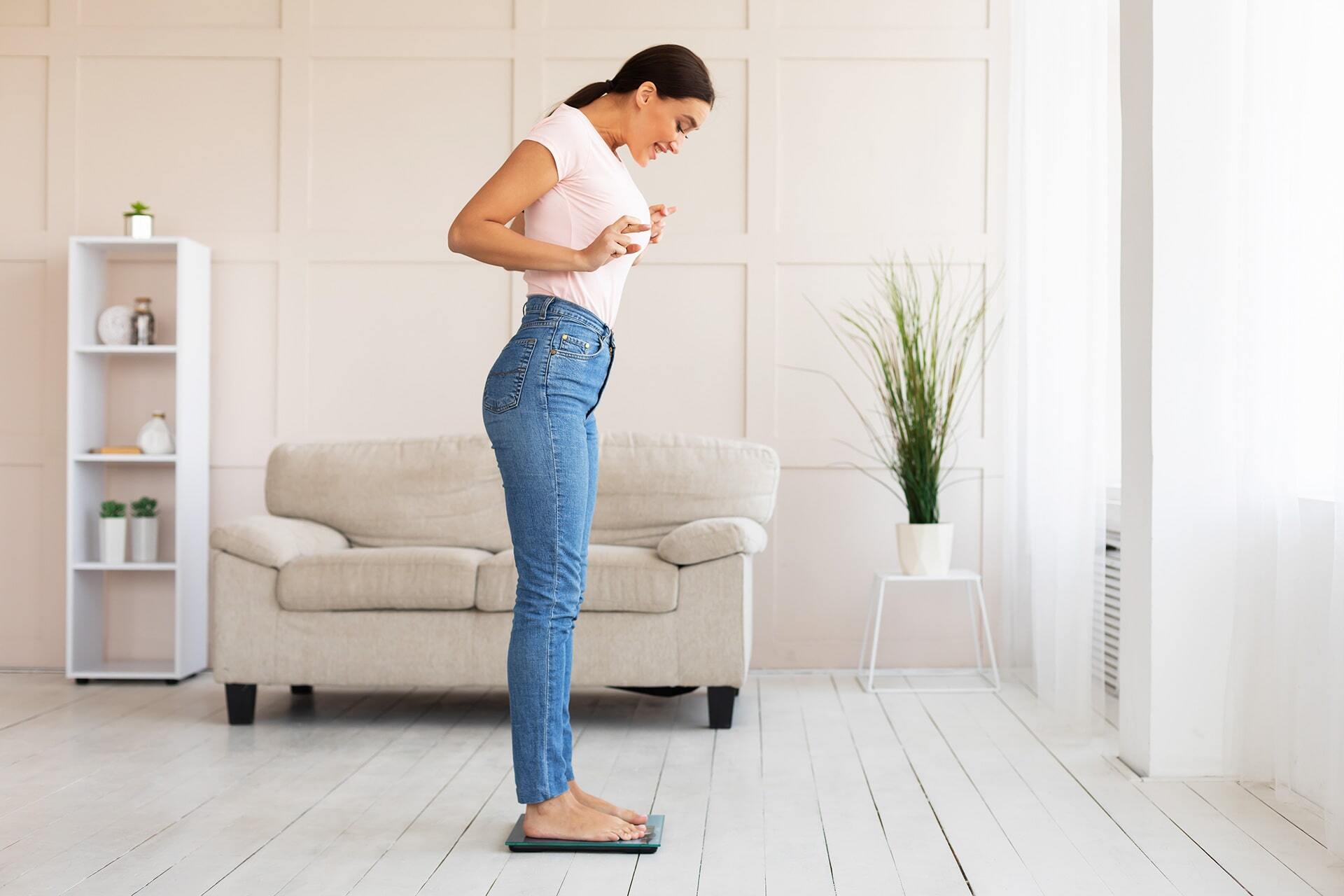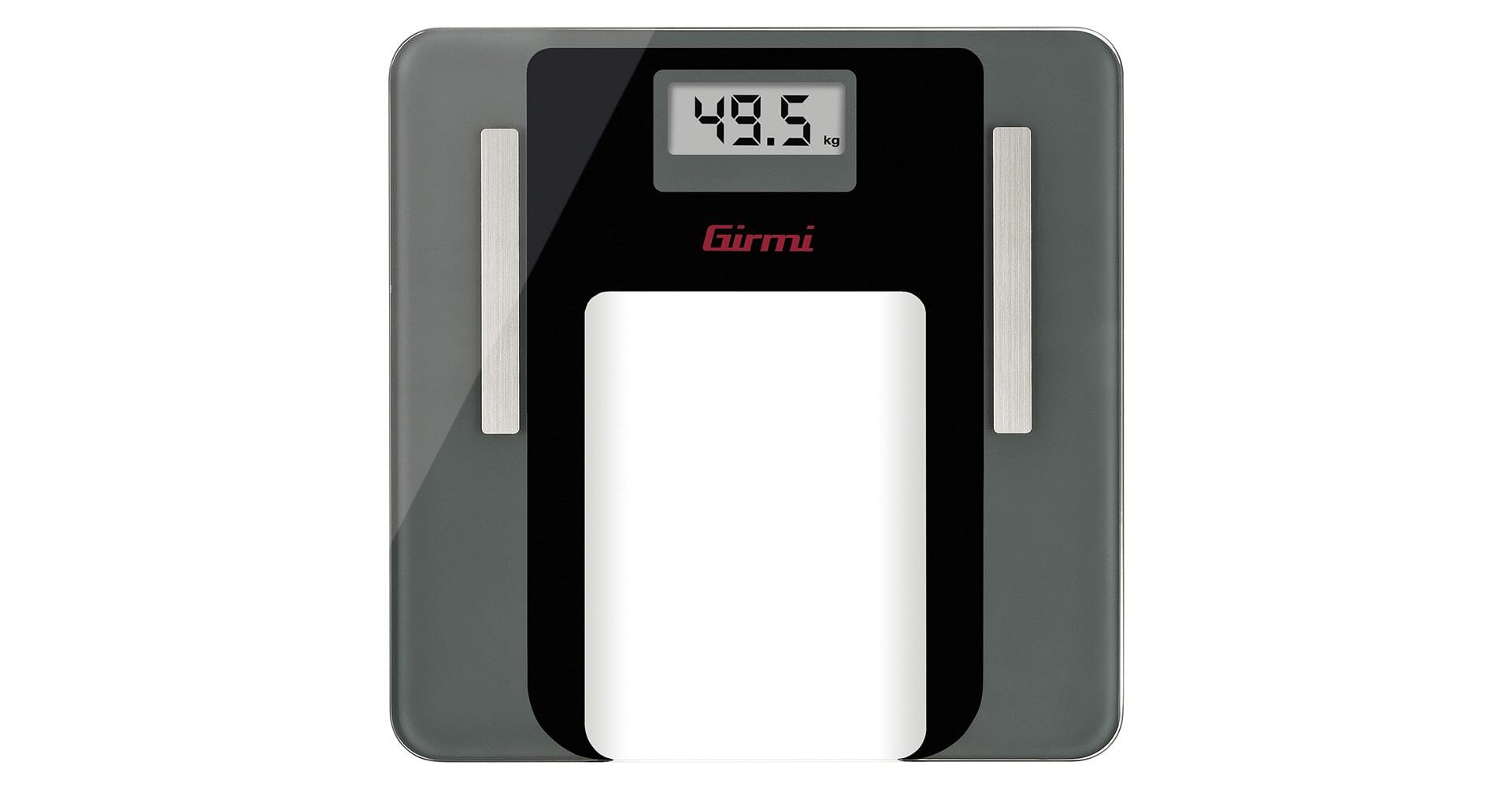How to Manage Your Wellness Goals with a Personal Scale
Health also involves prevention, which is why it can be helpful to learn how to manage your wellness goals through weight control using a personal scale. However, remember that weight is not the only indicator of well-being.
Some digital personal scales, known as bioelectrical impedance scales, use advanced technology to measure body composition through parameters like body fat percentage, muscle mass, and body mass index. By utilizing these features, you can gain a more comprehensive view of your overall health status.
In addition to focusing on these parameters, concentrate on maintaining a balanced diet and engaging in regular exercise, keeping in mind that the journey toward wellness is a personal and unique path: avoid constantly comparing yourself to others and move at your own pace.
Most importantly, remember that if you want to embark on a weight management journey or build muscle mass, or if you have concerns about your health, the first step is to consult a medical specialist who can guide you through this process.

First step: set your goals
The first thing to do is definitely to establish your goals, which doesn’t necessarily mean just losing weight. For instance, we might want to increase muscle mass or simply feel lighter and more energetic. To understand where we want to go, let's start with an analysis of our current state.
Health Status Analysis
To understand the starting situation, a personal scale can be a valuable ally, especially if it is a digital scale that analyzes body composition through various health indicators such as BMI, BMR, muscle mass, bone mass, fat mass, water content, and visceral and subcutaneous fat. The BP75 Girmi, for example, uses bioelectrical impedance analysis to calculate body composition data. This technique is based on measuring the resistance that certain body parts provide to an electrical field, allowing for the reconstruction of the most important parameters for assessing health status and physical condition. This electronic scale can help monitor health progress day by day and supports the adoption of a healthy lifestyle to prevent future illnesses.

Some biomarkers measured by this type of scale include BMI and BMR. Body Mass Index (BMI) is a standard measure of weight in relation to height. It is based on a mathematical calculation that provides indications about the total percentage of body fat, classifying the resulting values as "underweight," "normal weight," "overweight," or "obese," according to the guidelines of the World Health Organization (WHO). How is BMI related to overall health status? A high BMI is associated with several risk factors such as high cholesterol, type 2 diabetes, heart and cardiovascular diseases, hypertension, high blood pressure, sleep apnea, and certain types of cancer.
Basal Metabolic Rate (BMR), on the other hand, is the energy required for normal vital metabolic functions (such as breathing, blood circulation, digestion, and nervous system activity). It accounts for approximately 45-75% of total daily energy expenditure. The value of this energy expenditure, expressed in kilocalories, is influenced by sex, age, and lean body mass by about 80%. BMR is one of the key values used to create a suitable dietary plan tailored to individual needs.
Setting Realistic Goals
Once you’ve gathered the data, the next step is to analyze it and use it to set your goals. For this purpose, the Girmi BF75 body composition scale is a valuable tool because it not only collects bioimpedance data but also syncs with the Ailink app, providing charts and statistics that help you establish goals and monitor your results. In this case, having the support of a doctor can be very helpful in properly interpreting the data and setting reasonable objectives.
Once we’ve established a goal (for example, losing 5 kg), we can use the scale to track our progress week by week. If we notice that we’re not achieving the desired results, we can adjust our diet or increase our physical activity.
However, it’s important not to focus solely on the numbers on the scale. Our well-being depends on many other factors, such as energy levels, sleep quality, and overall mood. For this reason, it’s essential to listen to your body and seek a balance between healthy eating, regular physical activity, and relaxation.
When setting your goals, don’t overdo it: establish realistic objectives and reasonable timeframes to achieve them. Avoid trying to accomplish everything at once; instead, set smaller, more manageable micro-goals that will help you find the right motivation.
Regular Use of a Digital Bathroom Scale
It's important to use the scale regularly to monitor your weight and progress. The best practice is to weigh yourself at the same time every day, preferably in the morning before breakfast and after using the restroom. This way, the results will be more accurate.
Firstly, make sure to place the scale on a hard, flat surface, avoiding carpets or soft flooring. Also, ensure that the scale is level; otherwise, the results may be inaccurate. When you're ready to weigh yourself, remove your shoes and any other items that could affect your weight. Then, step onto the scale with both feet, standing upright and without shifting around too much.
Finally, if you need to monitor your weight regularly for health or fitness reasons, we recommend noting the results in a journal or an app on your phone to keep track of changes over time.
Exercise and Nutrition
As mentioned, alongside daily monitoring of weight and body composition, changes in diet and the amount of physical exercise are essential. These two aspects are indeed the primary tools at your disposal to achieve your wellness goals.
Incorporating exercise into your daily routine is crucial for enhancing both physical and mental well-being. As reported by the Italian National Institute of Health, regular physical activity is a valuable resource for reducing symptoms of anxiety, stress, and depression. Additionally, it helps improve sleep quality, aids in quitting smoking, and keeps blood sugar and cholesterol levels in check. It serves as an effective tool for preventing metabolic, cardiovascular, and neoplastic diseases, as well as osteoarthritis. Finally, physical activity promotes the reduction of excess body fat.
According to WHO guidelines, adults up to 65 years old should engage in a minimum of 150-300 minutes of moderate-intensity aerobic exercise each week, or opt for 75-150 minutes of vigorous-intensity aerobic activity. For additional benefits, it is recommended to include moderate to intense muscle-strengthening activities at least twice a week.
When it comes to nutrition, regardless of the goals you’ve set for yourself, it is always essential to follow a healthy and balanced diet that provides the right amount of energy and nutrients necessary for the proper functioning of the body. Eating a variety of foods in moderate portions, while including all food groups, is the best way to ensure a balanced diet:
- Fruits and vegetables are fat-free foods that are rich in vitamins, minerals, fiber, and antioxidants.
- Starchy foods like grains, bread, pasta, and potatoes provide a high energy value thanks to their complex carbohydrates.
- Dairy products supply easily absorbable calcium, which is important for the formation of bone tissue.
- Fish, meat, and eggs are rich in high-quality protein, and meat and fish also contain iron. Fish additionally has a protective effect against cardiovascular diseases due to its omega-3 content.
- It is advisable to limit the consumption of salt, alcoholic beverages, and sweet foods and drinks.
- Stay hydrated by drinking water.
If you are following a controlled diet, measuring portion sizes and tracking nutrient intake can help you monitor your diet and make necessary adjustments based on the progress you’re making. Tracking body composition, along with monitoring diet and physical activity, is indeed the best way to achieve tangible and measurable results without the risk of feeling frustrated.
Sometimes, when you decide to embark on a wellness journey, you may end up with a distorted perception of what you are doing: significant effort may not correspond to visible results, which can lead to early discouragement. Instead, setting micro-goals and accurately tracking both the actions you take and their effects on your body composition can help maintain strong motivation until you reach the desired outcome.
With medical supervision and the help of your electronic personal scale, your wellness goals are truly within reach.